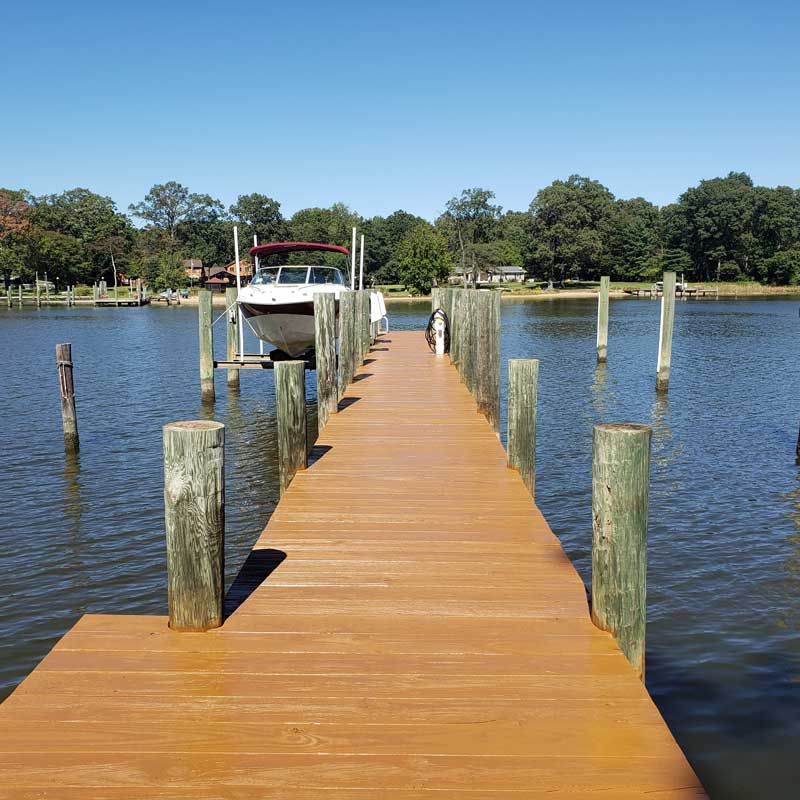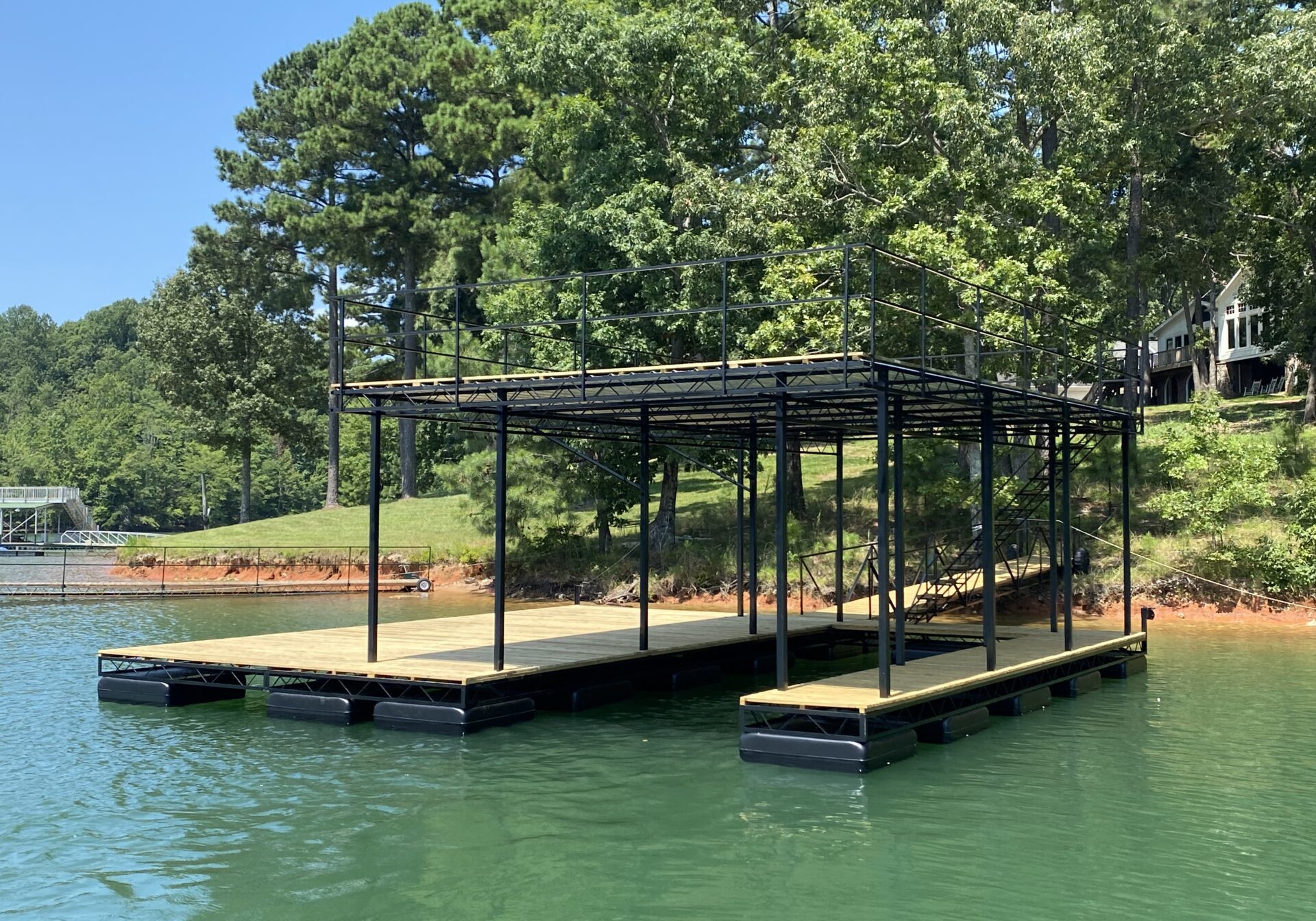Leading Indications You Need Professional Dock Repairs This Period
Reliable Dock Repair Techniques: Making Certain Structural Integrity
Making sure the structural honesty of anchors with effective repair work techniques is paramount for the durability and safety and security of marine centers. Subsequently, picking the ideal repair work materials, such as composite products and corrosion-resistant alloys, is important for sturdiness.
Analyzing Dock Damages
Analyzing dock damage is a vital initial step in ensuring the architectural stability and safety of any docking facility. This initial assessment involves a thorough examination to identify both noticeable and concealed damages. Key elements to examine include the dock's structure, pilings, decking, and equipment. Each part should be looked at for indications of wear, rot, corrosion, or various other kinds of deterioration that might compromise the architectural honesty.
Structural engineers or qualified inspectors commonly carry out these assessments making use of specialized strategies and tools. For circumstances, underwater assessments might employ sonar devices or from another location ran automobiles (ROVs) to spot immersed damage. Above water, aesthetic evaluations are enhanced by utilizing dampness meters and other analysis devices to reveal underlying problems not promptly noticeable to the nude eye.

Deciding On Fixing Products
Selecting the ideal repair work products is a pivotal step in the dock repair process, one that straight affects the long life and efficiency of the fixed structure. Material option should be driven by elements such as ecological problems, load-bearing needs, and compatibility with existing dock components.
In addition to timber, composite materials are increasingly popular due to their sturdiness and low maintenance demands. Composites, normally made from a mix of plastic and timber fibers, use exceptional resistance to rot, insects, and UV damages. For metal anchors, choosing corrosion-resistant alloys such as galvanized steel or marine-grade aluminum is necessary to stop rust and make sure structural honesty in saline water conditions.
Epoxy materials and marine-grade sealants are essential for repairing fractures and sealing joints, providing a water resistant barrier and boosting the dock's general strength. By diligently selecting premium materials, dock repairs can attain resilient outcomes, consequently securing versus future degradation and ensuring safe, trusted use.
Structural Reinforcement Methods
Effective architectural reinforcement methods are important in making sure the stability and longevity of dock repairs. This method is particularly efficient for anchors subjected to hefty loads or harsh environmental conditions.
An additional crucial method is the application of fiber-reinforced polymers (FRP) These products supply high strength-to-weight ratios and superb resistance to corrosion, making them suitable for strengthening wood or concrete docks. FRP can be used in strips or sheets and bound with epoxy materials to improve structural integrity.
Supporting and anchoring systems likewise play an essential role in structural support. Cross-bracing, using steel or wooden beam of lights, can combat lateral pressures, reducing guiding and motion. Anchoring systems, such as helical piers or driven piles, give a stable structure by moving lots to deeper, a lot more secure dirt layers.
Finally, the assimilation of load-distribution plates can aid distribute weight extra uniformly throughout the dock's surface area, reducing localized anxiety factors. These strategies collectively make certain that docks stay risk-free and durable, capable of standing up to the rigors of their functional environment.
Advanced Fixing Approaches

One more sophisticated strategy includes underwater welding, which permits repairs to be performed without the requirement to dewater Recommended Reading the area. This technique is particularly advantageous for addressing architectural issues in immersed dock components, guaranteeing very little interruption to operations. Boosted welding strategies, combined with robotic systems, supply precision and integrity, therefore extending the lifespan of the dock.
In addition, cathodic protection systems are carried out to avoid corrosion in metal dock structures. By utilizing sacrificial anodes or satisfied present systems, these techniques efficiently alleviate the electrochemical procedures that result in material damage.
Finally, advanced monitoring technologies, such as architectural health and wellness tracking (SHM) that site systems, give real-time data on the problem of dock structures. These systems make it possible for positive upkeep and timely treatments, eventually ensuring the long-term structural integrity of the dock.
Maintenance and Prevention
Upkeep and prevention are basic principles that underpin the longevity and safety and security of dock frameworks. Normal evaluations are extremely important, enabling very early discovery of damage, prospective weak points, and ecological impacts. An aggressive strategy, including routine look for corrosion, rot, and architectural shifts, alleviates expensive fixings and prolongs the dock's operational life.
Safety nets ought to consist of applying protective coatings to metal parts to secure against rust and utilizing cured timber to withstand decay. Furthermore, making certain appropriate drain and air flow can prevent water build-up, which is a typical root cause of architectural deterioration. Integrating high quality products and adhering to supplier guidelines during building and construction and repair phases likewise play crucial functions in enhancing resilience.

Training personnel in dock upkeep best techniques guarantees constant application of safety nets. Leveraging technological developments, such as drones for evaluations and sensors for real-time tracking, can better enhance upkeep efforts. By focusing on upkeep advice and prevention, dock owners can guarantee structural honesty, operational security, and cost-effective management over the dock's life-span.
Final Thought
In conclusion, maintaining the structural stability of marine centers demands extensive dock repair work methods. Advanced repair service methods, coupled with normal maintenance techniques, ensure the dock stays risk-free and functional under varied environmental conditions.
Guaranteeing the structural honesty of anchors with efficient fixing strategies is extremely important for the longevity and security of aquatic facilities.Selecting the suitable repair work products is an essential action in the dock remediation procedure, one that directly affects the longevity and performance of the fixed structure.Effective structural reinforcement techniques are vital in guaranteeing the stability and long life of dock fixings. By prioritizing maintenance and prevention, dock owners can make certain structural stability, operational security, and cost-effective monitoring over the dock's life expectancy.
In conclusion, preserving the structural stability of marine facilities demands comprehensive dock repair techniques.